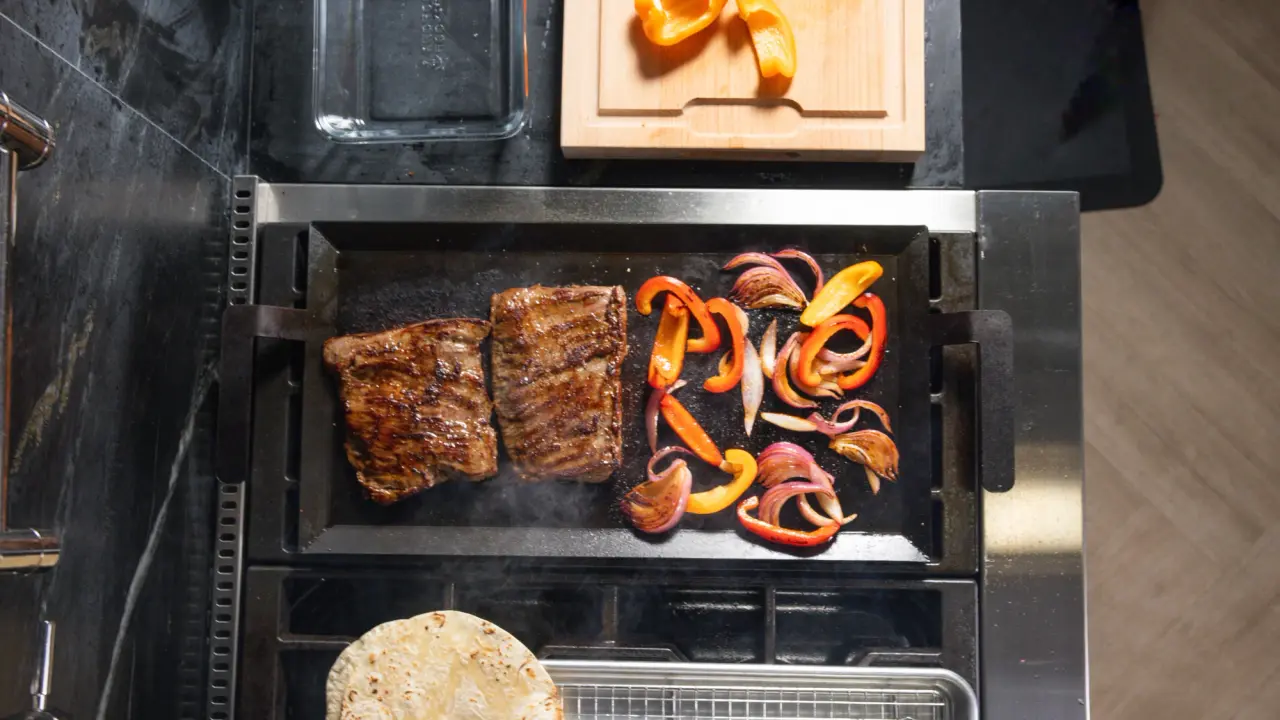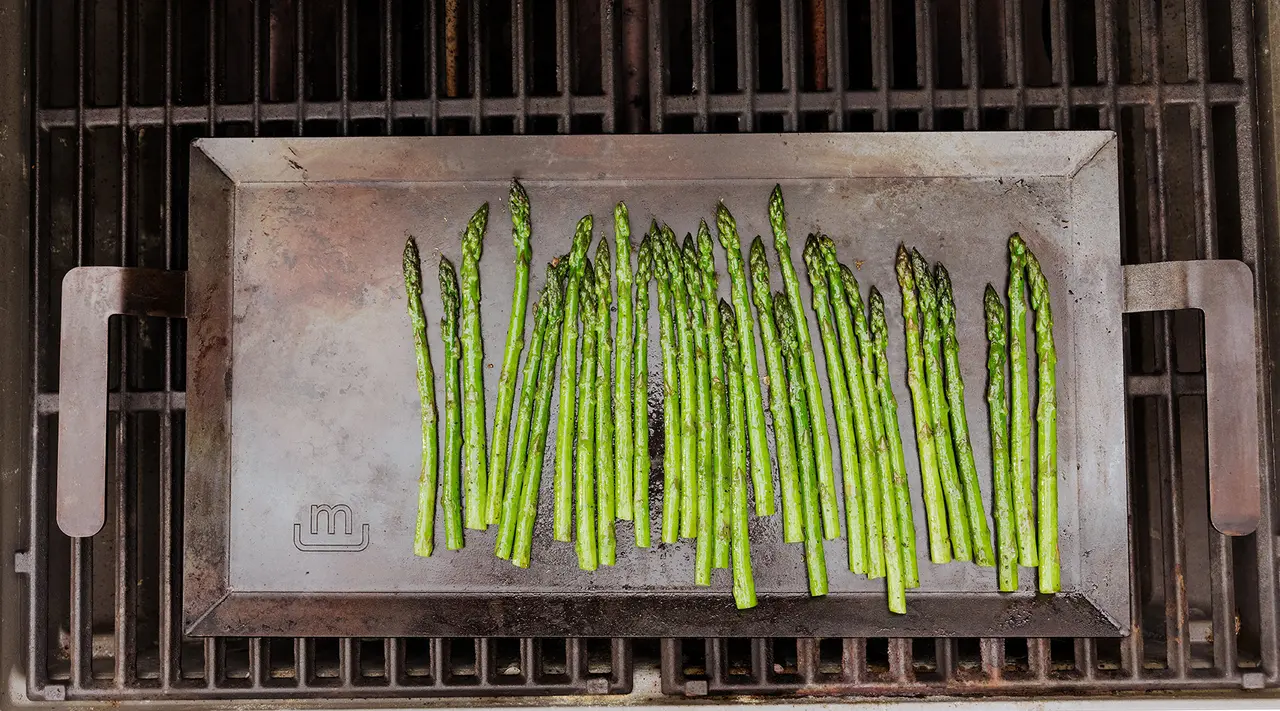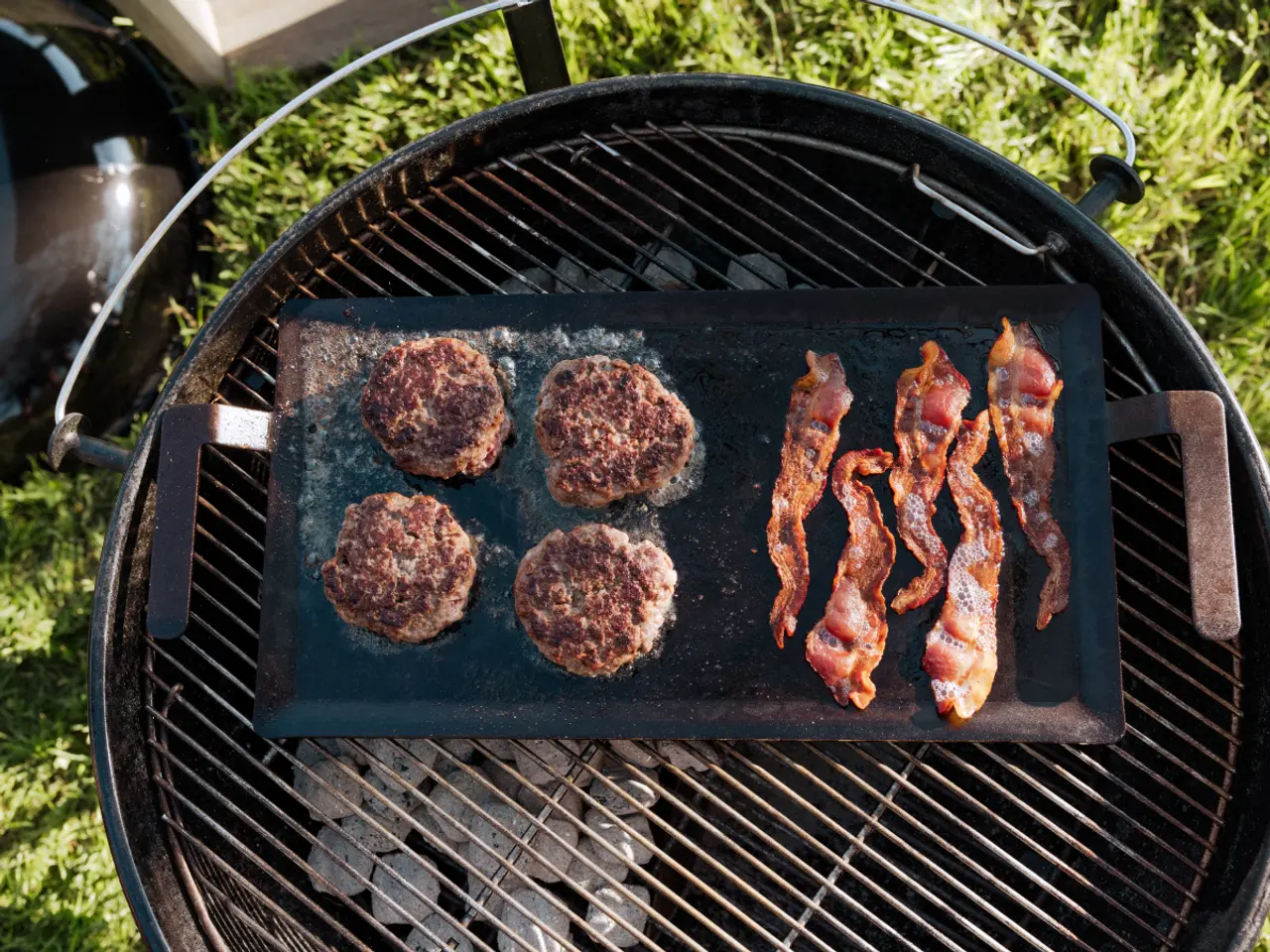Think of some of your favorite restaurant dishes like crispy quesadillas, juicy smash burgers, a stack of fluffy, golden brown pancakes with a side of well-done bacon. The one thing these dishes have in common? We can almost guarantee that they came off a piping hot flattop griddle.
With its generous surface area and ability to cook a lot of food at once without losing heat, the griddle is exactly what you need to replicate the crisp, golden-brown crust on your favorite diner hash browns or the charred, savory edges on your favorite panini.
Yet there’s more than one kind of griddle out there—and they all work a little differently, depending on how they’re made. In this guide, we break it all down so you can choose the best one: from size and shape to material construction, here’s how to choose your next favorite kitchen tool.
Why a Griddle Is a Must-Have in Every Kitchen

A griddle should offer all the benefits of a good frying pan, but with a plenty more room to spread out.
Versatility in Cooking
A griddle’s broad, flat surface works well for cooking everything from pancakes and bacon to Japanese okonomiyaki. Go for a material like carbon steel, and your list of options grows even longer: you can use carbon steel’s seasoned surface and quick, efficient heating ability to sear perfect steaks, fish vegetables, and whatever else you decide to throw on.
A portable griddle—like our preseasoned Carbon Steel Griddle—offers even more versatility, since you can haul it outside to use on the grill or even over a live fire.
Benefits of Using a Griddle
Griddles also introduce a bit of flexibility to outdoor cooking. Whereas cooking with a traditional gas or charcoal grill involves direct flame contact, imparting a robust, smoky taste to food, a griddle uses a wide, flat surface to sear food and produce a more evenly brown, crispy exterior.
They’re also easier to clean than the grates of a grill, since they’re both non stick and portable: simply pour off the grease when you’re done cooking, then give it a quick rinse and wipe down before drying thoroughly.
Key Features to Consider When Choosing the Best Griddle

Like any new piece of staple cookware, it’s worth investing in a griddle that cooks well, lasts a long time, and is compatible with your cooking style.
Material
Griddles tend to be made from one of a handful of materials: cast iron; carbon steel; stainless steel; and non stick.
Carbon Steel
Carbon steel is an extremely durable, responsive material, heating up quickly and evenly. In a griddle, that translates to more evenly cooked food, deeper sears, and more control over the temperature gradient of items like steaks and burgers. It’s also non stick once seasoned, and lightweight enough for easy carrying to and from the grill.
Cast Iron
Cast iron retains heat extremely well and offers a naturally non stick surface, which makes it among our top choices for slow cooking, braising, and oven roasting. However, it takes a very long time to cool down—longer than it takes for you to burn your eggs or overcook your delicate Dover sole. It’s also a much heavier material, which can really add up with a pan as large as a griddle.
Stainless Steel
Stainless steel is also a solid pick for a griddle. Similarly lightweight and arguably even more responsive than carbon steel, stainless steel can get you an equally great sear. Unlike carbon steel or cast iron, however, it does not offer a naturally non stick surface and may require a bit of a learning curve.
Electric
Electric griddles are free-standing, meaning they sit on your counter and need to be plugged into an outlet in order to cook with them. Most electric griddles are also coated non stick. If you plan on using a griddle mainly for breakfast fry-ups or other low- or medium-heat applications, this can be a great option.
Size and Cooking Surface
While definitely the most common, not all griddles are of the big, two burner variety: you can find plenty of half- or different sized versions (like our Carbon Steel Half Griddle). These can be a great option for smaller kitchens, or for when you just want a smashburger without having to haul out a big pan.
Since they have slightly more surface area and lower walls than a frying pan, a smaller griddle still offers many of the same benefits as a large one, but with a smaller footprint.
Heating Method
As we briefly touched on, you can choose between either a stovetop griddle (one that sits directly over your burners) or an electric griddle, which lives on your countertop. While we prefer the versatility of a stovetop griddle—you can pick from a variety of materials, and they can be used on both the stove and the grill—an electric griddle can be used anywhere with access to an outlet, and offers the convenience of a non stick surface.
One thing to note about electric griddles, however: the vast majority come with a PTFE non stick surface. Since non stick doesn’t get quite as hot as the other options on our list, can’t be heated above a certain temperature, and eventually wear out, they’re not a good option for items like steaks, smash burgers, or anything you want to get a deep sear on.
Our Pick for the Best Griddle

Carbon steel is our griddle material of choice: not only is it super precise and responsive to temperature change, but it’s also naturally non stick for easier cleanup (and less chance that you’ll ruin the crust on your smash burgers). It’s also lightweight, making it easier to carry to and from the grill.
How to Use and Maintain Your Carbon Steel Griddle

Like any piece of cookware, you’ll get more out of your griddle if you know how to use it properly—as well as how to maintain it.
Prepping Your Griddle
If you’ve used any kind of carbon steel cookware before, you already know how to maintain a carbon steel griddle: basically, make sure to season it well before using it, and wipe it down with water and dry thoroughly after each use. Prevent your griddle from rusting by storing it away from moisture and humidity (so, definitely not outside), and by reseasoning it whenever the surface is starting to feel a bit sticky or the raw metal is beginning to show.
For beginner carbon steel users, we’ve got a dedicated guide to caring for your carbon steel griddle or any other carbon steel cookware, as well as one on reseasoning. We’ve also got a few guides on caring for non stick or stainless steel cookware, in case your griddle is made from one of these materials.
Cooking Techniques
A griddle—especially a carbon steel griddle—really shines when it comes to quick, high heat cooking. If you’ve got a griddle that fits over two burners (which we highly recommend), try using it for dual zone cooking: crank one side up to medium-high or high, and keep the other on low or medium-low.
For meals with multiple components (like quesatacos), or for cooking in batches, this can help you keep one batch of food warm while you finish cooking the rest of the meal. You can also use it for finishing proteins like chicken breasts and burgers over a low heat to keep them from overcooking.
Ready to Shop?
Once you’ve got your griddle prepped and ready to go, the world is your oyster (which, by the way, tastes pretty superb when griddled on the half shell and topped with garlic butter). Our pre-seasoned Carbon Steel Griddle helps you cook everything from blackened fish to blueberry pancakes with ease and precision.































